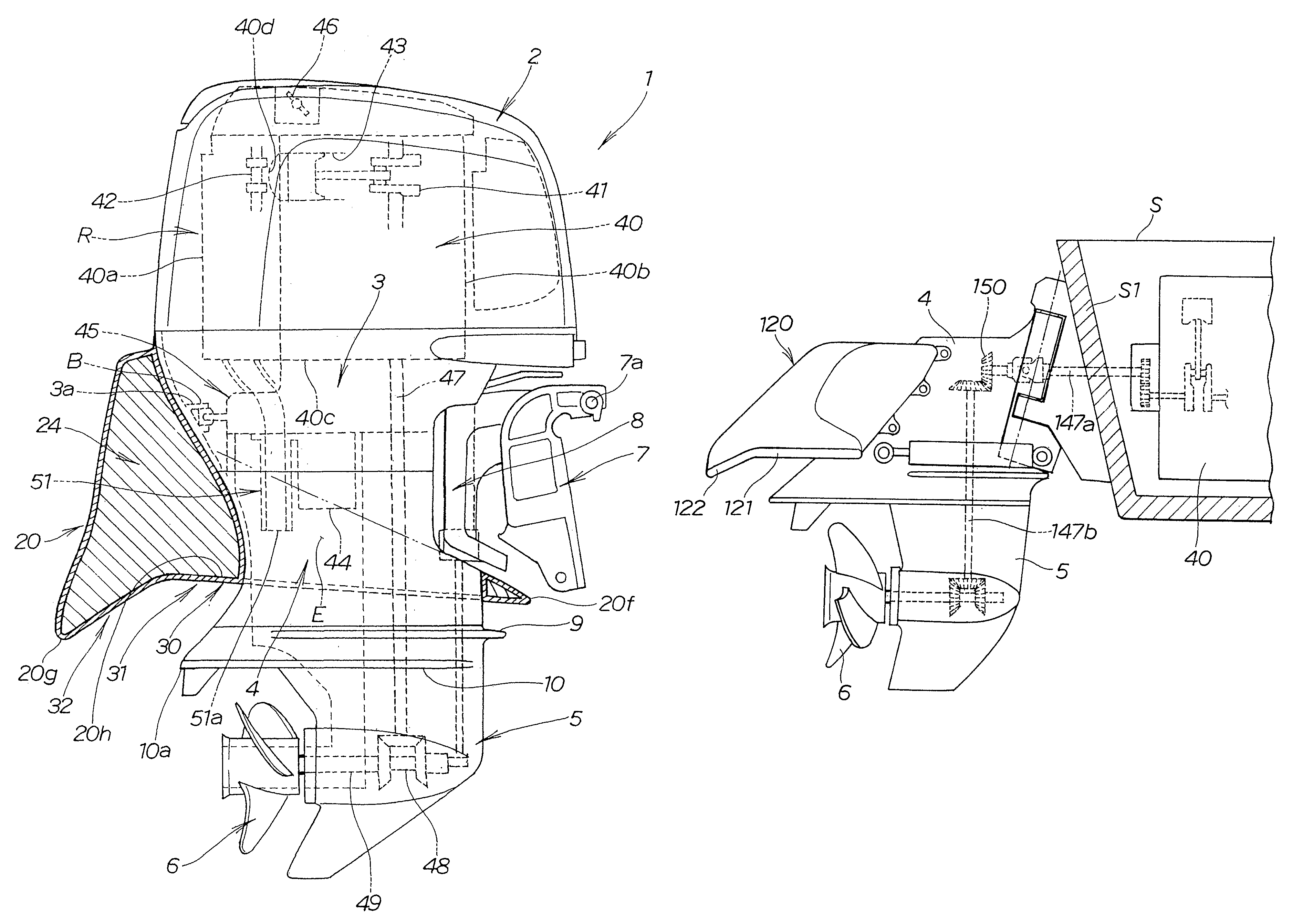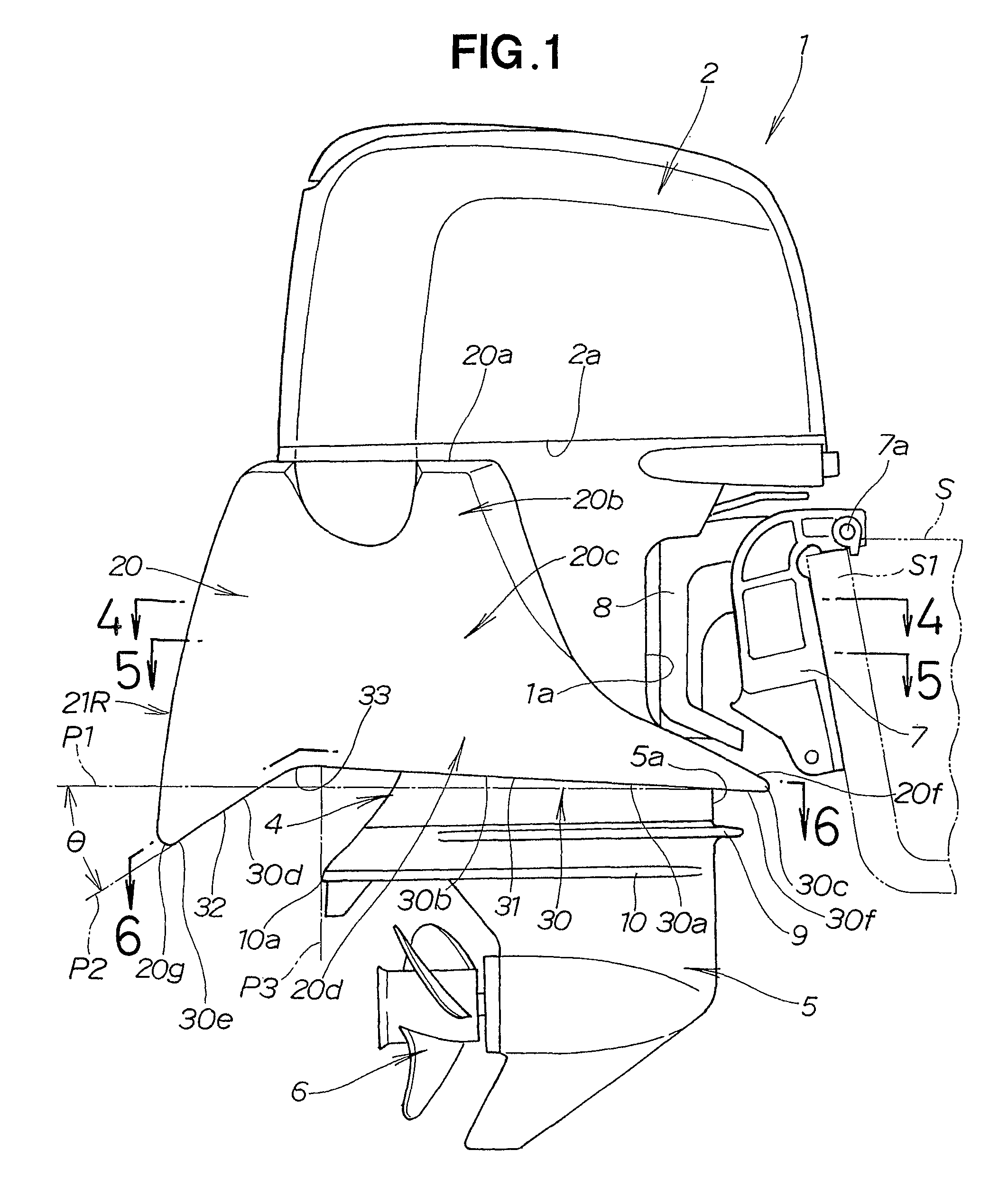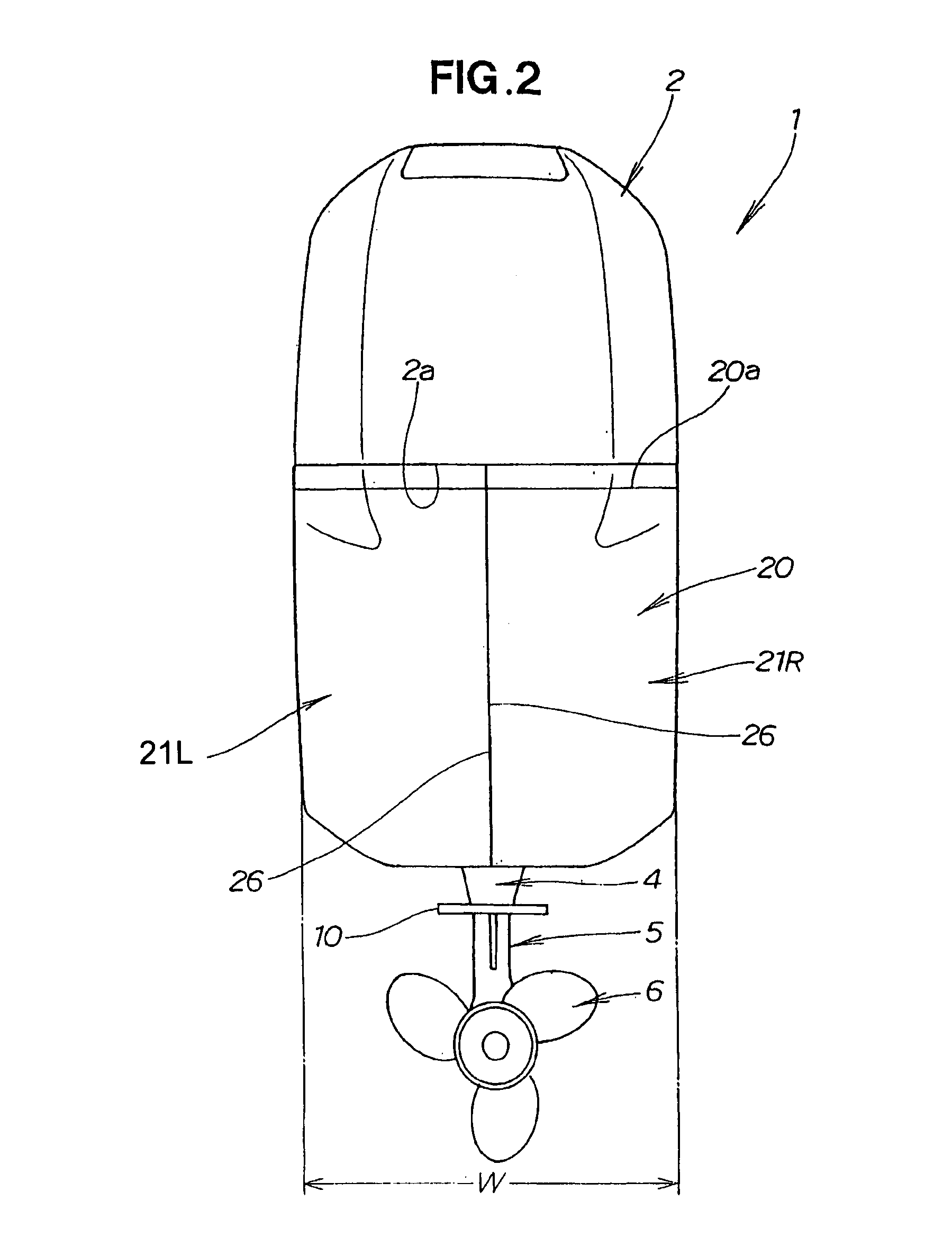Boat propulsion engine
a propulsion engine and boat technology, applied in the direction of marine propulsion, propulsive elements, vessel construction, etc., can solve the problems of difficulty in enforcing water tightness in the lower cowling, inability to achieve adequate boat speed, and difficulty in ensuring water tightness in the upper cowling, so as to reduce the upward splashing of water, reduce the downward sinking, and accelerate smooth
- Summary
- Abstract
- Description
- Claims
- Application Information
AI Technical Summary
Benefits of technology
Problems solved by technology
Method used
Image
Examples
Embodiment Construction
[0030]Referring now to FIGS. 1 to 6 inclusive, description will be made as to a boat propulsion engine or an inboard-engine outboard-drive unit, according to a first embodiment of the present invention. The boat propulsion engine in this embodiment is referred to simply as an outboard motor.
[0031]The outboard engine 1 has a engine cover (top cover) 2 that covers the upper half of an engine (power source) 40, and an undercover 3 that covers the lower half of the engine 40, as shown in FIGS. 1, 2, and 3. An engine room R is formed by the engine cover 2 and undercover 3. An extension case (leg body) 4, which is a drive shaft case, is disposed below the under-cover 3. A gear case 5 having a propeller 6 for propulsion is disposed below the extension case 4.
[0032]A concavity 1a that is concave in the rearward direction of the outboard engine 1 is formed on the front portion of the extension case 4. The outboard engine 1 is mounted on the stern S1 of the hull S by way of a stern bracket 7....
PUM
 Login to View More
Login to View More Abstract
Description
Claims
Application Information
 Login to View More
Login to View More - R&D
- Intellectual Property
- Life Sciences
- Materials
- Tech Scout
- Unparalleled Data Quality
- Higher Quality Content
- 60% Fewer Hallucinations
Browse by: Latest US Patents, China's latest patents, Technical Efficacy Thesaurus, Application Domain, Technology Topic, Popular Technical Reports.
© 2025 PatSnap. All rights reserved.Legal|Privacy policy|Modern Slavery Act Transparency Statement|Sitemap|About US| Contact US: help@patsnap.com



